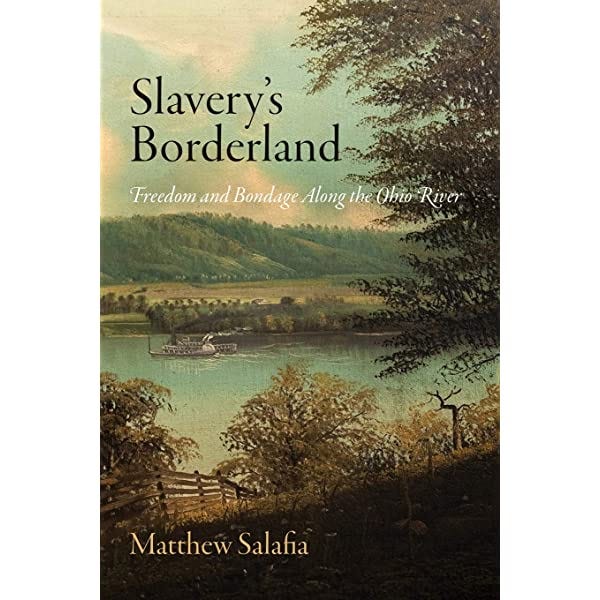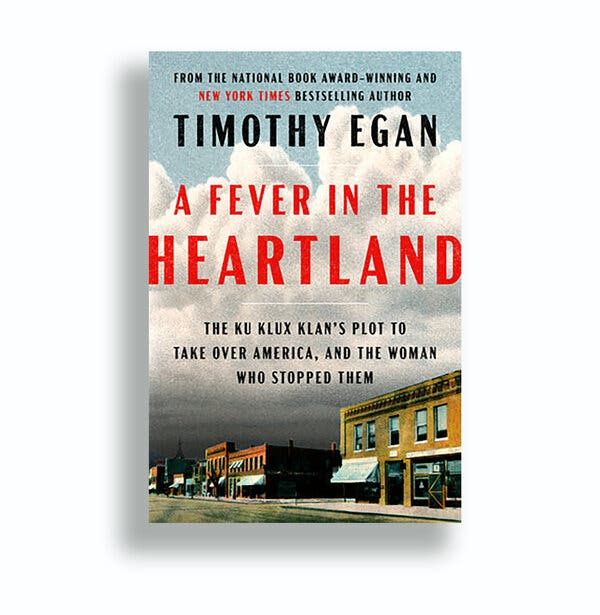Stuff I Never Learned in Ohio History Classes
Either it wasn't in the curriculum, or I wasn't paying attention
Educated in Ohio public schools, I had an overly simplified understanding of slavery in America, making it easy to be proud of our state’s history on the right side of the Underground Railroad and Civil War. Enter The 981 Project, which required a ton of research. Oh, how much I didn’t know!
Today’s newsletter covers two of the topics that took me 61 years to learn.
Slavery existed north of the Ohio River
At its inception, the Northwest Territory was set aside as a slavery-free zone, and the Ohio River marked a bright line between slave- and free states. Law settled the matter. Cut and dried. Right? That’s how I learned it.
Oh, no. What a fool I’ve been. While the river marked the legal boundary between slave- and free states—even before there were states in the Territory—slavery was practiced everywhere. Sometimes it just had a different name. Did I forget that? Or was it glossed over in the classroom? I am trying to find some of my old Ohio History textbooks to see for myself what was in my public school curriculum. I got a hot tip that Harvard’s Gutman Library might have copies of my textbooks along with others, so stay tuned.
One of the books I’ve been reading to correct my understanding is Slavery’s Borderland: Freedom and Bondage Along the Ohio River.
Historian Matthew Salafia Ph.D., brought me up to speed:
Chattel slavery became chattel servitude north of the Ohio River, despite article six of the Northwest Land Ordinance, which stated, “There shall be neither slavery nor involuntary servitude in the said territory…”.
Article six did not, and could not, free slaves already in the territory; neither did it include an enforcement clause.
Then-governor of the Indiana Territory, William Henry Harrison (who became America’s ninth president) brought slaves with him to Vincennes, the territorial capital, and petitioned Congress to suspend article six. When Congress declined to do so, he passed a series of indenture laws that combined elements of chattel slavery and indentured servitude.
Cincinnati implemented the Overseers of the Poor to enforce the state's "black laws" which, among many other things, required blacks to register with the county clerk to ensure that they were not fugitives and to obtain a certificate to work in the city. Can you imagine coming up with $500 for a bond guaranteeing your “good behavior” in the 1800s? That’s about $12,000 today!
Salafia also argues that the river was “both a physical boundary and a unifying economic and cultural force that muddied the distinction between southern and northern forms of labor and politics.”
A “unifying economic and cultural force?” Do tell, Dr. Salafia.
Kentucky didn’t secede largely because “an unstable border between states within a union was better than a hostile border between enemy nations.”
“The diverse mixture of free and slave labor in their state left white Kentuckians less vulnerable and defensive than cotton planters in the Deep South and convinced them that slavery was somehow milder in their state than further south.”
“Their belief in the mildness of slavery in Kentucky led antislavery northerners along the river to view Kentucky as a state where gradual and peaceful emancipation was possible.”
“Neither Ohioans nor Indianans nor Kentuckians ever stopped looking to the federal government as the last resort to resolve interstate conflicts…Thus they could fight over slavery, but never lose faith in the Union.”
The KKK Thrived in the Former Northwest Territory
Just a month ago, I learned that the county where I grew up had hosted two of the largest Ku Klux Klan konclaves of the twentieth century. In 1923 and 1925, over 75,000 members of the “Invisible Empire” made their way to Buckeye Lake, Ohio, where hooded and robed Klansmen stood side-by-side with sheriff deputies directing traffic. I couldn’t help but wonder how this history shaped the community, which in turn shaped me. I’ve included a video on Buckeye Lake below.
Last week, author Timothy Egan released A Fever in the Heartland: The Ku Klux Klan’s Plot to Take Over America, and the Woman Who Stopped Them. While Egan mentions the two Buckeye Lake konclaves in passing, he hews to the main thread of why and how the Klan gained more traction in its second wave than its first.
I had heard about the 1920s Indiana Klan some thirty years ago, from a friend whose father had been one (he was also a colonel in the US Army). In her telling, the Klan performed selfless acts of community service and claimed a membership thick with respectable ministers of mainline churches, businessmen, congressmen, and senators eager to improve their communities. I let her account sit until The 981 Project led me to dig into history. My friend wasn’t completely wrong in claiming the organization was involved in charity, but what she didn’t mention about Klan-built hospitals was the fact that they were for the exclusive use of white Protestants. Didn’t mention that the Klansmen on boards of education attempted to keep Jews out of public schools and outlaw Catholic ones.
I’ll let Egan’s words explain how white Protestants used the Klan to deal with the onrush of modernity in the Jazz Age:
The original hooded order directed most of its venom against Black people. With Jews and immigrants of an old faith based in Rome pouring into the country, the revived Klan would open up fresh categories of undesirables. Hate was tailored to the region—Asians on the Pacific coast, Mexicans in the Southwest, Mormons in the Rocky Mountains, Blacks in the South, Jews on the East Coast, and immigrants and Catholics everywhere. To this list was added sex—that is, all the new cultural expressions of sensuality. ~A Fever in the Heartland p. 23
With so much research under my belt, get ready for a torrent of newsletters this year! And thanks to my paying subscribers for your monetary vote of confidence in what’s to come.




